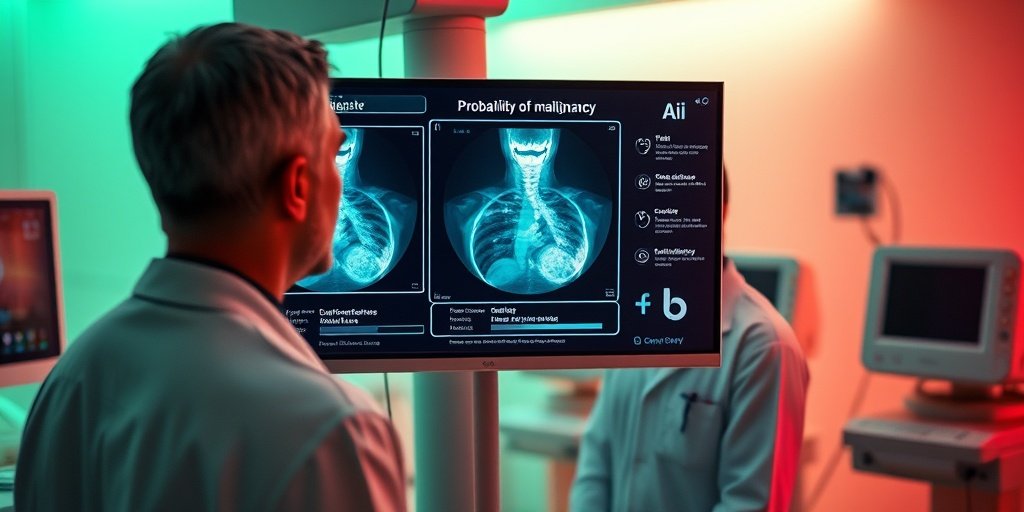Overview
A recent study conducted by Dutch researchers has introduced a hybrid reading strategy for screening mammography that significantly reduces the workload of radiologists while maintaining cancer detection and recall rates. This innovative approach was applied retrospectively to over 40,000 mammogram exams.
Key Findings
- Workload Reduction: The hybrid strategy decreased radiologist workload by 38%.
- Performance Consistency: There was no change in recall or cancer detection rates.
- AI Confidence: The study emphasizes the importance of AI confidence in interpreting mammograms.
Study Details
The research, published in Radiology, involved a dataset of 41,469 screening mammography exams from 15,522 women aged around 59 years. The dataset included both screen-detected and interval cancers.
The hybrid reading strategy combines the expertise of radiologists with AI interpretations, particularly in cases where AI performs comparably or better than human readers. The AI model assesses the probability of malignancy (PoM) and provides a certainty rating for its predictions.
Methodology
The dataset was split into two equal groups for calibration and evaluation:
- The first group was used to establish optimal thresholds for the hybrid reading strategy.
- The second group was utilized to assess the effectiveness of the reading strategies.
Results
The AI’s uncertainty metrics, particularly the entropy of the mean PoM score, yielded a cancer detection rate of 6.6 per 1,000 cases and a recall rate of 23.7 per 1,000 cases, comparable to traditional double-reading methods.
When AI was confident in its assessment, it could autonomously read 38% of the cases, allowing radiologists to focus on more complex cases. The overall workload for radiologists was reduced to 61.9% of current levels.
Implications for Practice
Lead author Sarah D. Verboom emphasized the significance of integrating uncertainty quantification into AI models to enhance trust and clinical acceptance. The study suggests that AI could potentially handle up to 19% of mammogram evaluations without radiologist intervention.
Verboom noted that while many women prefer their mammograms to be reviewed by a radiologist, the hybrid model could alleviate workforce shortages and improve screening efficiency.
Future Directions
Further research, including prospective trials, is necessary to validate the hybrid strategy in clinical settings and to explore its impact on radiologist reading time and overall healthcare costs.
This study is part of the aiREAD project, supported by the Dutch Research Council, Dutch Cancer Society, and Health Holland.
